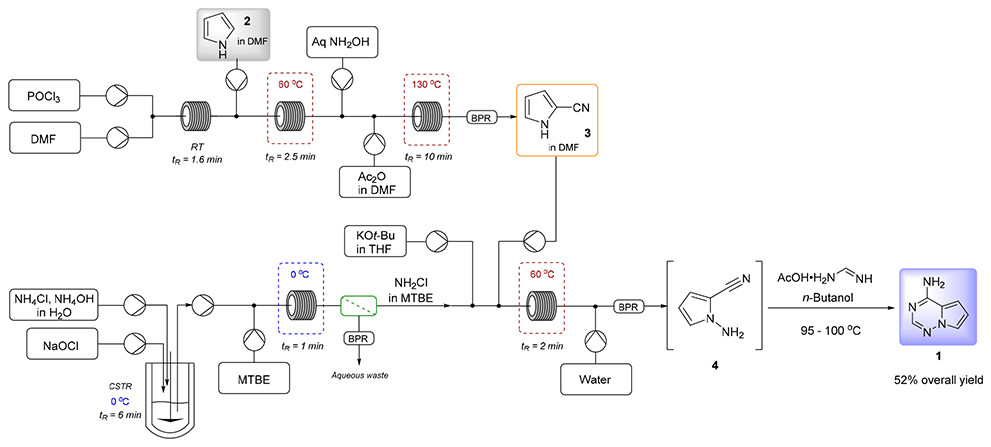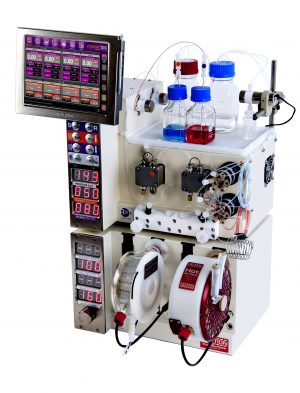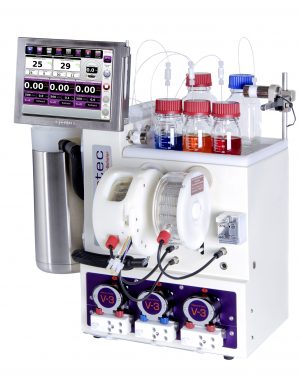Development of Continuous Flow Processes to Access Pyrrolo[2,1-f][1,2,4]triazin-4-amine: An RSM for the Synthesis of Antiviral Drugs
- Maksim Vasileva, Aravind S. Gangua, Praveen Gajulaa, Nathaniel D. Kaetzela, Vasudevan Natarajana, Bimbisar Desaia, Gopal Sirasania, Bo Qua, and Chris H. Senanayakea
- aTCG GreenChem, Inc., 701 Charles Ewing Boulevard, Ewing, New Jersey 08628, United States
 Read the publication that featured this abstract
Read the publication that featured this abstractPyrrolo[2,1-f][1,2,4]triazines are important scaffolds in a number of active pharmaceutical ingredients with a broad range of biological activities to treat broad-spectrum viral infections. We recently reported the synthesis at the kilogram scale in batch mode with extensive process safety studies, where NaH was applied as the base to deprotonate 2-cyanopyrrole, and then in situ prepared monochloramine solution was utilized for the N-amination, followed by cyclization with formamidine acetate to produce the required pyrrolo[2,1-f][1,2,4]triazine (1) as the regulatory starting material for the antiviral drug Remdesivir. To meet the market demand of Remdesivir for the treatment of the recently emerged severe acute respiratory syndrome coronavirus 2 (SARS-CoV-2), a high-throughput process is required to supply this key starting material on a large scale in a timely manner. In this Article, we report the second-generation synthesis of pyrrolo[2,1-f][1,2,4]triazine 1 by employing continuous flow chemistry tools. The amination step was adapted to continuous flow by applying in situ monochloramine synthesis and utilizing a process-friendly soluble base KOt-Bu. The new multistage continuous flow approaches, including both chemical steps, extractions and separations, afford a viable process to access this widely employed key starting material 1 for the synthesis of Remdesivir.
Get in touch
For more information on flow chemistry systems and services please use the contact methods below.
Call us on +44 (0)1284 728659 or Email us
Resource Centre
R-Series

The Vapourtec R-Series is, quite simply, unrivalled for flow chemistry
- Flexible |
- Precise |
- Automatable
The R-Series is undoubtedly the most versatile, modular flow chemistry system available today.
E-Series

The Vapourtec E-Series is the perfect introductory system for flow chemistry
- Robust |
- Easy to use |
- Affordable
The E-Series is a robust and affordable, entry level flow chemistry system designed for reliability and ease of use.
